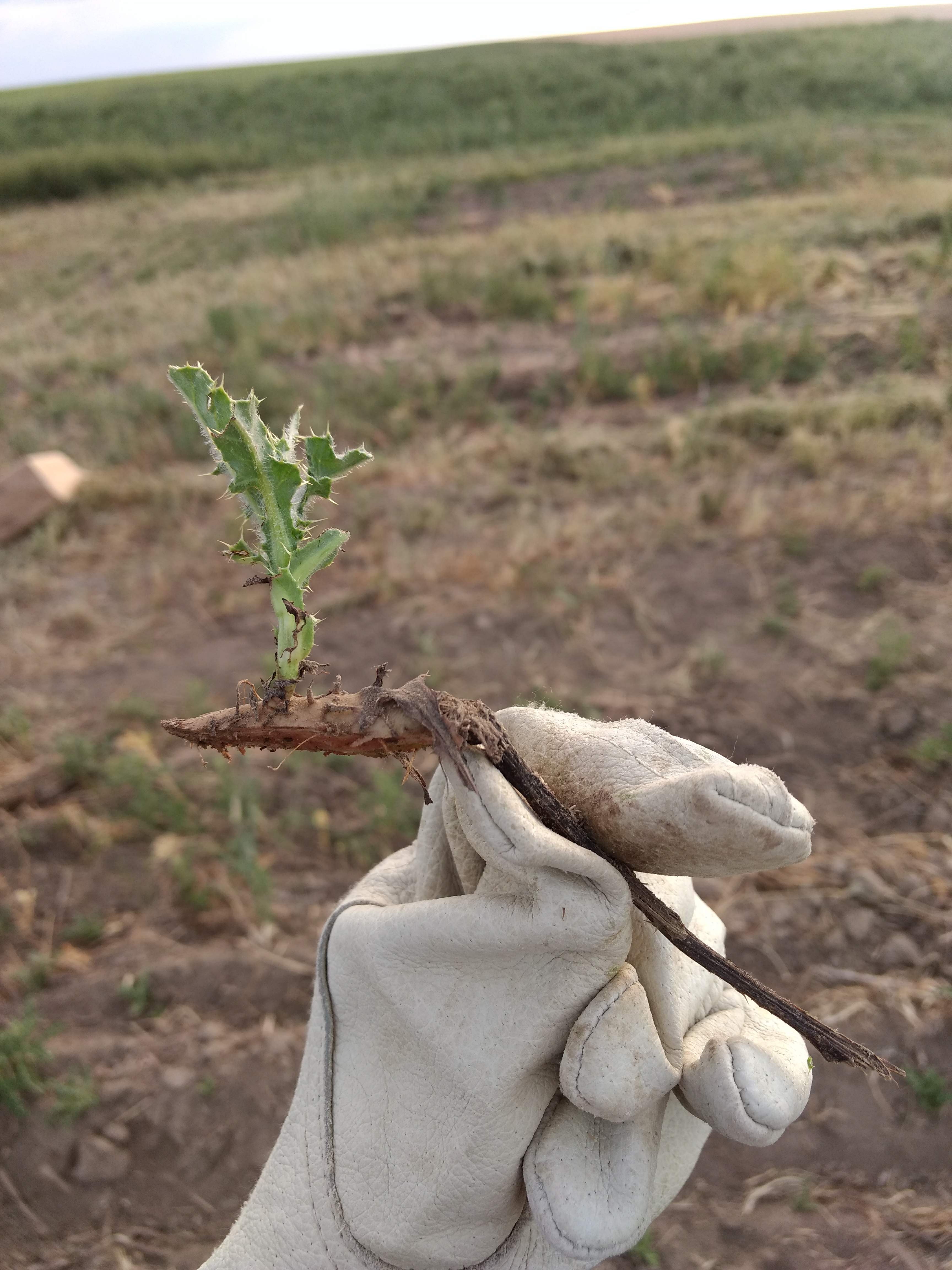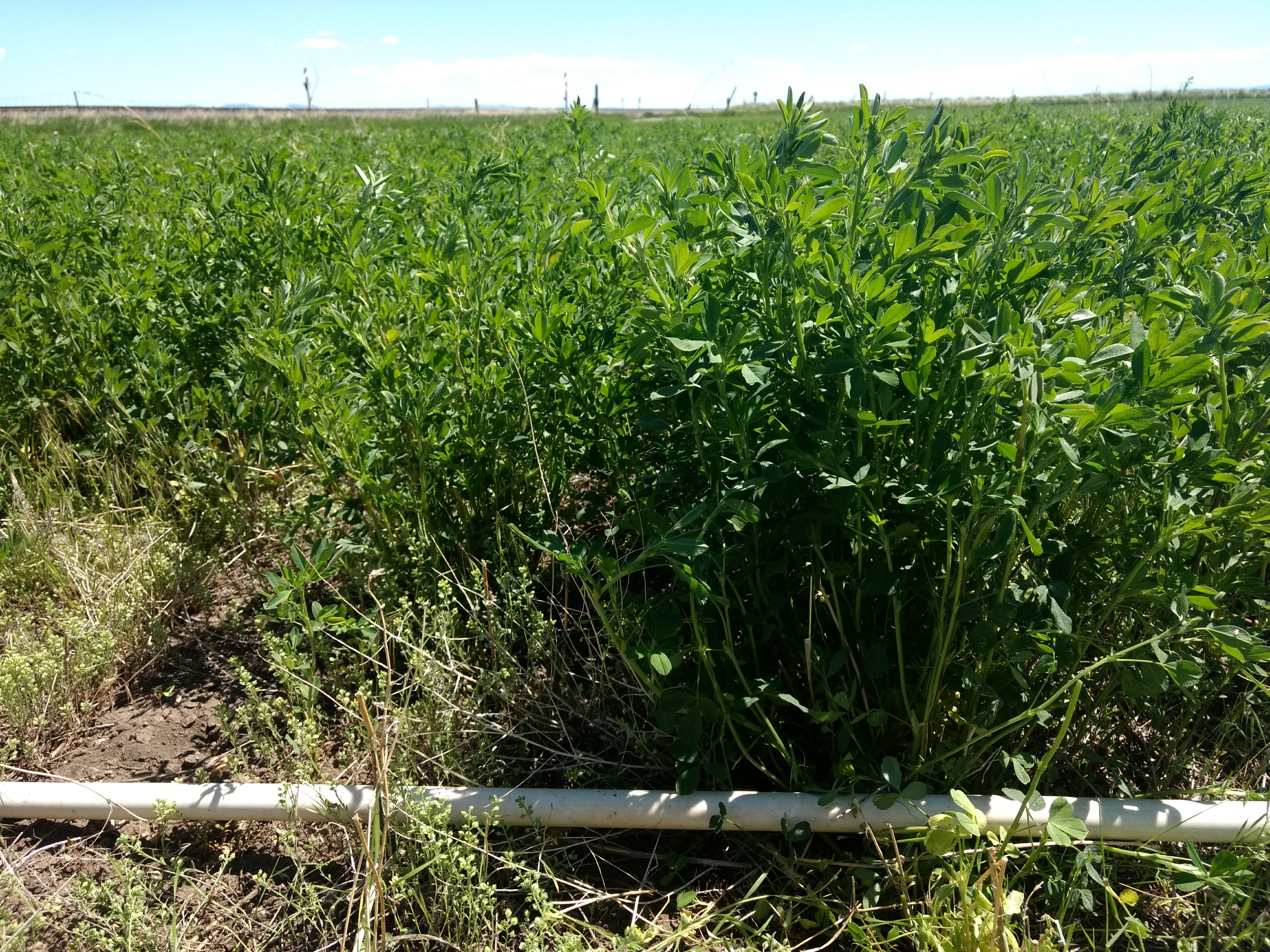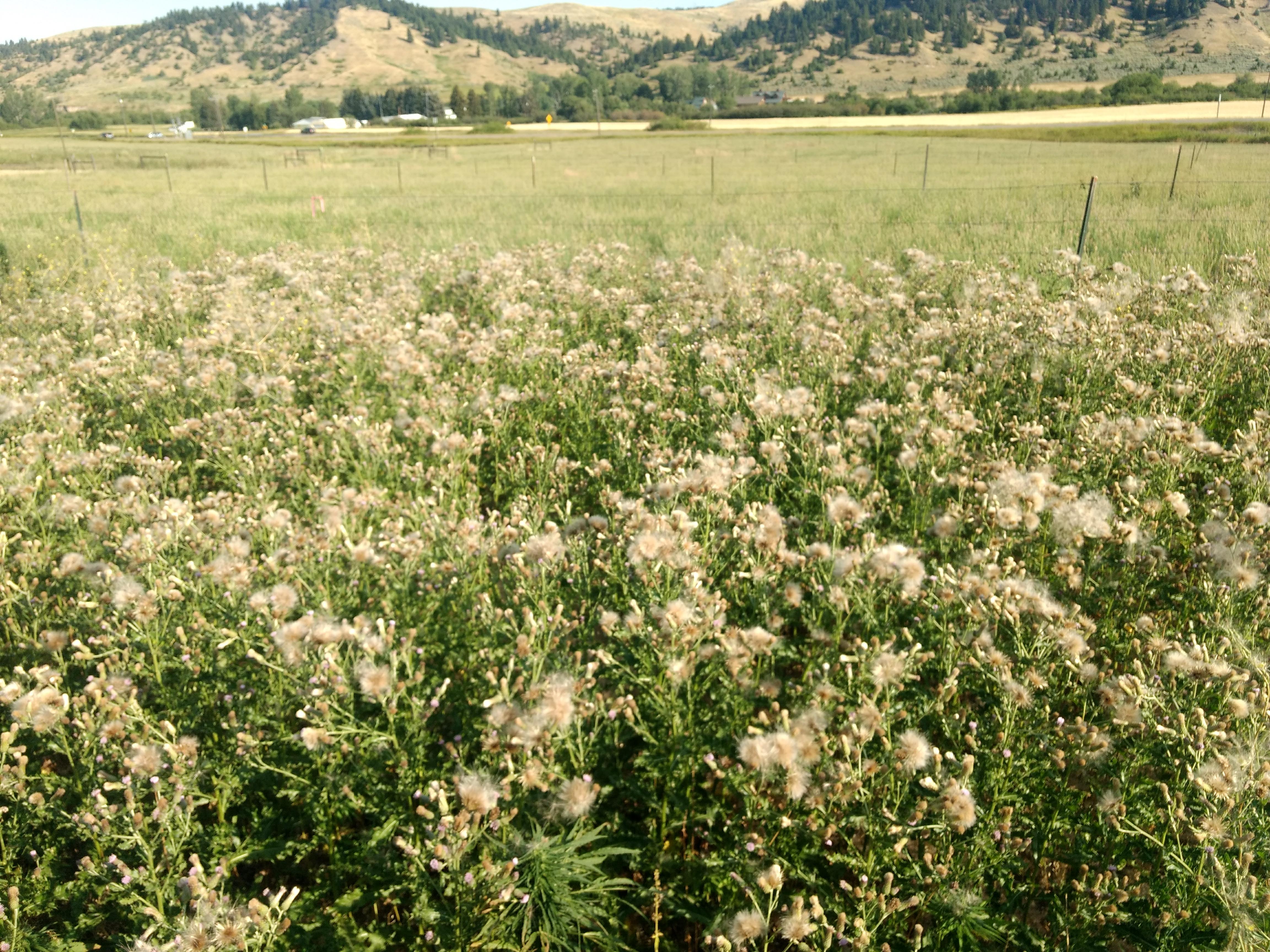Integrated Management of Canada Thistle and Field Bindweed in Organic Systems
Authored by Kara Hettinger, Pat Carr, Perry Miller, and Tim Seipel

Figure 1. Canada thistle ramet regrowing from a small piece of live root that was disturbed during a tillage event (Conrad, MT).
In 2013, the Montana Organic Advisory and Education Council (OAEC) surveyed organic grain producers across the state with the aim of determining their primary agronomic concerns and areas in need of further research. The feedback from producers was resounding: perennial weeds are a problem. Perennial weeds, namely Canada thistle (Cirsium arvense) and field bindweed (Convolvulus arvensis), are notoriously difficult to manage in organic systems due to their extensive root systems, significant seed production, and abililty to reproduce vegetatively (Figure 1). Weed management strategies typical for organic producers, such as soil cultivation through tillage, can actually act to spread these troublesome weeds across fields.
In 2018, in response to farmers' concerns, researchers at Montana State University published a meta-analysis on the management of Canada thistle and field bindweed. The review reiterated that rhizomatous perennials are difficult to suppress in organic annual cropping systems. Individual treatment options, such as crop competition or mowing, demonstrated, on average, only slight decreases in either Canada thistle or field bindweed populations. Of the management strategies available to organic producers, an integrated approach showed the greatest promise in reducing both weedy species in annual organic cropping systems.
Integrated weed management is the combination of biological, cultural, and mechanical controls into a singular pest management plan. Between 2017 and 2022, two associated studies were conducted to assess Canada thistle and field bindweed population responses to different integrated management strategiess, which included varied combinations of tillage, grazing, and crop rotations. In both studies, treatments were arranged on a spectrum of crop competition and tillage intensity, which were inversely related. For example, a two-year crop rotation consisting of perennial alfalfa (Medicago sativa L.) constituted maximum crop competition and minimal tillage intensity, whereas a wheat (Triticum spp.) rotation followed by two consecutive years of tilled fallow represented minimal crop competition and maximum tillage intensity. Treatments within this gradient had crop rotations with varied mixtures of annual and biennial monocot and dicot crops and minimal to moderate tillage regimes, sometimes including livestock grazing with sheep.

Figure 2. Healthy, second-year alfalfa stand with minimal weed pressure and almost no Canada thistle competition (Central Agricultural Research Center, Moccasin, MT).

Figure 3. Hemp crop infested with mature Canada thistle population. Hemp crop can be seen in the bottom-center of the photo (Fort Ellis Research Farm, Bozeman, MT).
Multiple years of either intensively tilled fallow or alfalfa crop prevented or decreased both field bindweed and Canada thistle populations over three-year periods in both field trials (see Figure 2). For field bindweed, a treatment using a biennial sweet clover crop and livestock grazing for crop and weed termination produced the greatest bindweed density. Similarly, crop rotations with multiple years of annual monocot or dicot crops increased Canada thistle density and biomass over time (see Figure 3). There were no differences in Canada thistle populations due to tillage method (e.g., standard or reduced-grazing). Both studies demonstrated that intensive soil cultivation or intensive crop competition in the form of perennial alfalfa were most successful in suppressing perennial weeds. Moderate to highly diverse annual or biennial crop rotations, under either standard or reduced tillage methods, did not prevent populations of perennial field bindweed nor Canada thistle from increasing. Incorporating a perennial forage or temporary pasture phase into annual organic grain rotations in Montana is recommended to reduce perennial weed pressure.
Check back in to listen to a conversation between MSU IPM Extension Director Dr. Tim Seipel and local Gallatin Valley organic farmer Nate Powell-Palm in which they discuss the challenges posed by Canada thistle and how improving the economics of the forage market may help organic producers better manage perennial weeds.
